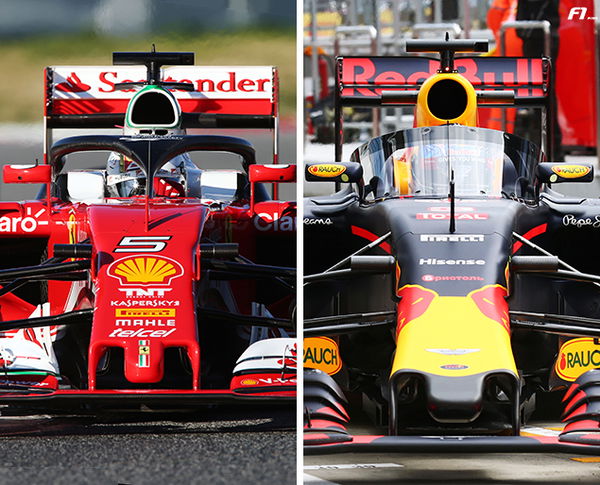

For the past couple of years, Formula One has been employing the HALO on every car. However, prior to its official introduction, there was a choice between that and an aeroscreen. Then, after much debate, the HALO won and was implemented in Formula One.
Interestingly, the Aeroscreen did not completely fade away from existence. Instead, it will soon be employed by fellow open-wheel series, IndyCar. It is worth noting that Red Bull team principal, Christian Horner believes that Formula One could replace the halo with the aeroscreen.
Ever since it was introduced at the beginning of the 2018 Formula One season, it had a trial by fire that year. To be precise, at the Belgian Grand Prix, it was truly tested in a multi-car pile up at the start of the race. At that time, Fernando Alonso’s McLaren bounced off of Charles Leclerc’s halo, potentially saving the life of the young Monegasque driver.
ADVERTISEMENT
Article continues below this ad

via Imago
The HALO
Speaking to Autosport, Christian Horner admitted, “I’ll be interested to see how it operates in IndyCar, how it’s received, some of the challenges that will inevitably happen.
“But I think it will be a good test pit for it. And if it works, then why not look at introducing it to F1? Hopefully it will work out well for them.”
The Aeroscreen received positive reviews from some of the IndyCar drivers, like five-time NTT IndyCar Series driver Scott Dixon. On July 2nd, he performed a driving simulation of five different racetracks with the Aeroscreen and was pleased with the results. According to him, INDYCAR is on the right path with its new Aeroscreen, which will be implemented for the 2020 season.
ADVERTISEMENT
Article continues below this ad
The Aeroscreen was developed in partnership with Red Bull Advanced Technologies. It comprises of a ballistic screen anchored by titanium framework surrounding the driver. The framework mounts in three areas around the cockpit to provide enhanced load-bearing capabilities.
The test was conducted at the Dallara Research Center in Indianapolis where Dixon drove simulated laps around five tracks, including the Indianapolis Motor Speedway. The others tracks were Texas Motor Speedway, Iowa Speedway, Barber Motorsports Park and the Long Beach street circuit.
ADVERTISEMENT
Article continues below this ad

ADVERTISEMENT
ADVERTISEMENT
ADVERTISEMENT
ADVERTISEMENT


